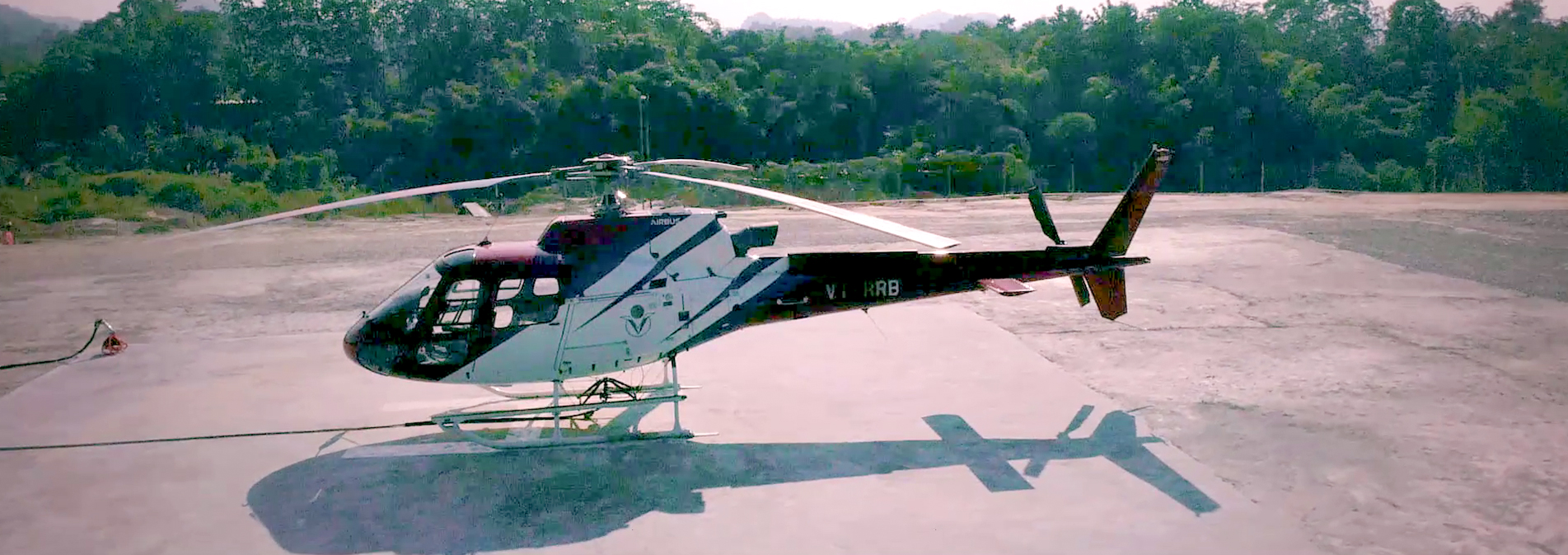
Breakthroughs
Project Prakhar: Sterlite Power’s latest aviation innovation to navigate the tricky terrains in the North East of India
Sterlite Power deployed a unique innovation in the form of light-weight helicopters to successfully transport transmission and construction material over the tricky terrains of Arunachal Pradesh, eliminating the risk of Covid-19 jeopardising operations. Following the innovative use of heli-cranes in the NRSS-29 Kashmir project, this aviation operation was another exemplary showcase of the organisation's innovative spirit
In 2020, the shadow of Covid-19 loomed large over the country. Social distancing norms mandated avoiding large assemblies of people for any purpose. Faced with an impossible deadline of three months and movement of thousands of metric tonnes of material and equipment across the thickly forested and mountainous terrains of Arunanchal Pradesh, it took the most out of men and machines to overcome the unique challenge posed by a never-seen-before pandemic.
An enormous challenge
In the far north eastern corner of India lies the state of Arunachal Pradesh. The entire territory forms a complex hill system with varying elevations ranging from 50 metres in the foothills to gradually ascending to about 7,000 metres. These geographical attributes make it one of the most challenging terrains in the country.
Sterlite Power was engaged in the construction of a 132kV transmission line connecting Itanagar in Arunachal to Biswanath Chariali (BNC) in Assam. For the construction of this corridor, a total of 3,300 metric tonnes of material, consisting of heavy equipment and machinery in the form of towers, stringing material, conductors, etc. had to be moved across treacherous routes. Some parts of the travel necessitated passing through thickly forested areas with no motorable roads.
In regular times, mules and human labour would have been the ideal conduit to transport the material over these tricky zones. However, in the 'new normal', a new approach was the need of the hour. With the pandemic aggravating, it was imperative to avoid large assembly of people. The project also ran the risk of cost and time overruns, which could have significantly delayed the project.
To tackle the situation, Sterlite Power decided to execute project Prakhar.
An effective and efficient solution
The word Prakhar is used in Hindi to describe something mighty effective. The solution deployed by Sterlite Power lived up to its name.
For the first time in the history of the company and perhaps, the Indian power transmission industry, lightweight helicopters were deployed to transport heavy equipment and material. AS 350 B3 helicopters with a load-carrying capacity of up to 900kg per sortie, were pressed into service to transport the material from BNC region in Assam to over 40 locations in Arunachal Pradesh. Two heliyards were created at BNC, customised to the region’s topography, to house the helicranes and load them for the sorties.
The aerial operations began in October 2020 and continued for the next three months. Over 400 hours of safe flight operations, the Sterlite Power team flew down ~3,300 metric tonnes of material. If done conventionally, the exercise would have required 1,500-2,000 people with mules at some places for successful execution. But Project Prakhar was a masterstroke as it created a contactless and risk-free transportation network. With precise scheduling and execution, the Sterlite Power team maintained an optimum time, space, cost, and human capital equation.
Project Prakhar is yet another instance of Sterlite Power using aerial technology to deliver astounding results. It comes close on the heels of a similar feat in the NRSS-29 (Northern Region Strengthening Scheme) project, completed in February 2019. Sterlite Power had deployed state-of-the-art helicranes for material movement and tower construction in the Pir Panjal range in Kashmir at altitudes as high as 8,000 to 12,000 ft.
For Project Prakhar, Sterlite Power's team went a step ahead and adapted the technology to the changed requirements. Such innovations enabled Sterlite Power to overcome logistical challenges and save a significant amount of time, while ensuring minimal ecological disturbance.
The flawless execution of Project Prakhar testifies that the unprecedented difficulties have not dimmed Sterlite Power's resolve to light up India's darkest corners with reliable power.